Last updated: May 16, 2025
Article
Change in Alpine Vegetation in the U.S. Rocky Mountains: Analysis of Data from Five GLORIA Sites, 2003–2021
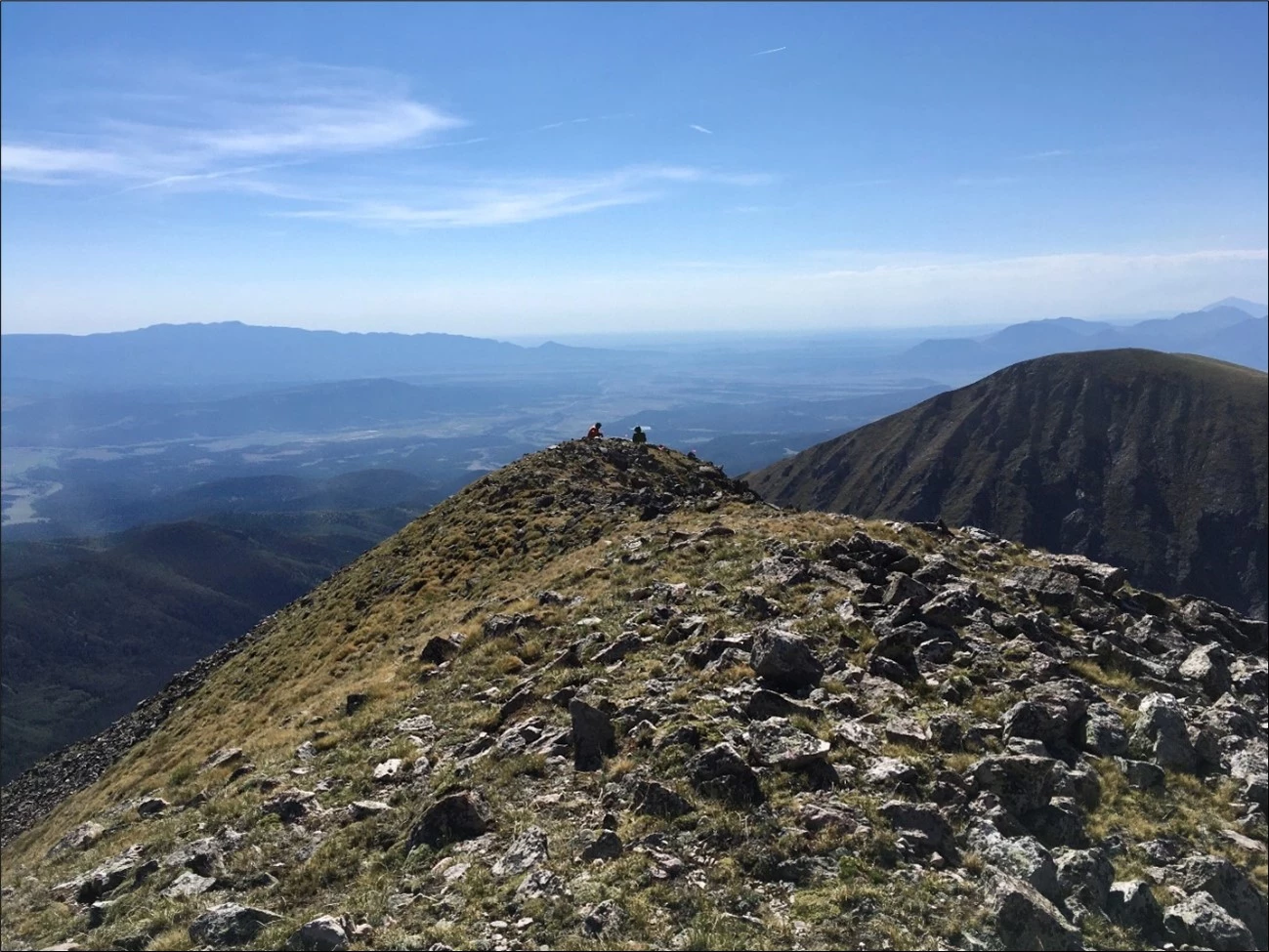
NPS/Sarah Marshall
It can be cold at the top of a mountain, but the views are spectacular! National Park Service (NPS) scientists and their partners have been braving the cold to see how mountain-top (alpine tundra) vegetation is responding to stressors, such as warming temperatures and air-borne pollutants. Their work is part of an international program called the Global Observation Research Initiative in Alpine Environments, or GLORIA, which began in 2001. Of the approximately 130 GLORIA sites around the world, 25 are in the United States. Five sites in the Rocky Mountains are the focus of this article.
The NPS scientists and their partners at the University of Colorado, Boulder, recently completed a project to analyze the data collected through 2021 at the five sites—in Glacier National Park (NP), Yellowstone NP, Rocky Mountain NP, Great Sand Dunes NP and Preserve, and Pecos Wilderness in the Santa Fe National Forest (Figure 1). Their goal was to assess plant species and community responses to stressors (particularly climate) to inform NPS management of alpine ecosystems. Data from the GLORIA sites have stories to tell.
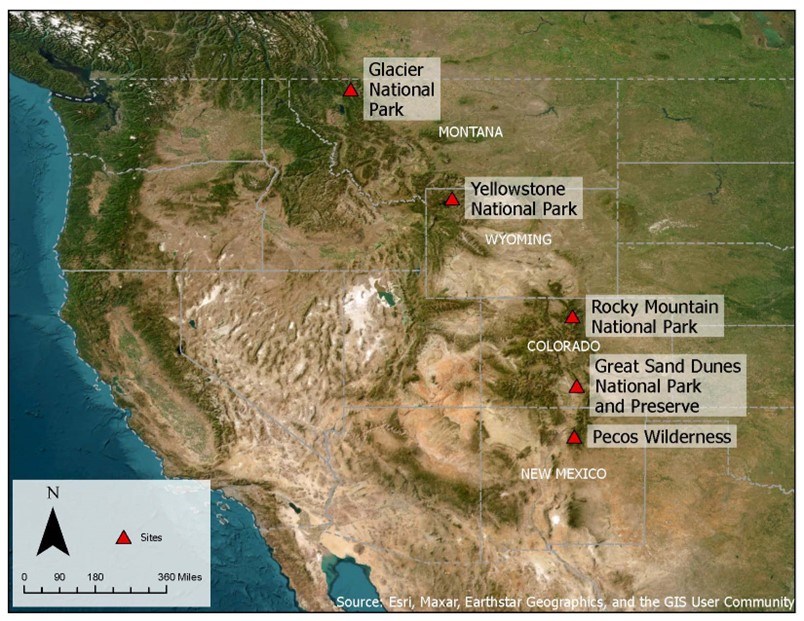
.
Life at the Top: the Alpine Tundra Environment
We’ve mentioned that it can be cold, but how else would one describe the alpine tundra environment? It’s characterized by high winds, thin soils, a lack of trees, long winters, and extremes in cold and hot temperatures. Both plants and animals living in these areas have strategies, or adaptations, to cope with these conditions. Plants are generally low to the ground and can live for years—potentially decades to more than 100 years. They also grow slowly, which makes them less able to adapt to changing conditions.
Alpine environments across the western United States are already experiencing changing conditions. Temperatures have increased in the northern Rocky Mountains at a higher rate than the global average (Pederson et al. 2010), and several species at the southern limits of their geographic ranges are declining in and around Glacier National Park (Lesica and Crone 2017).
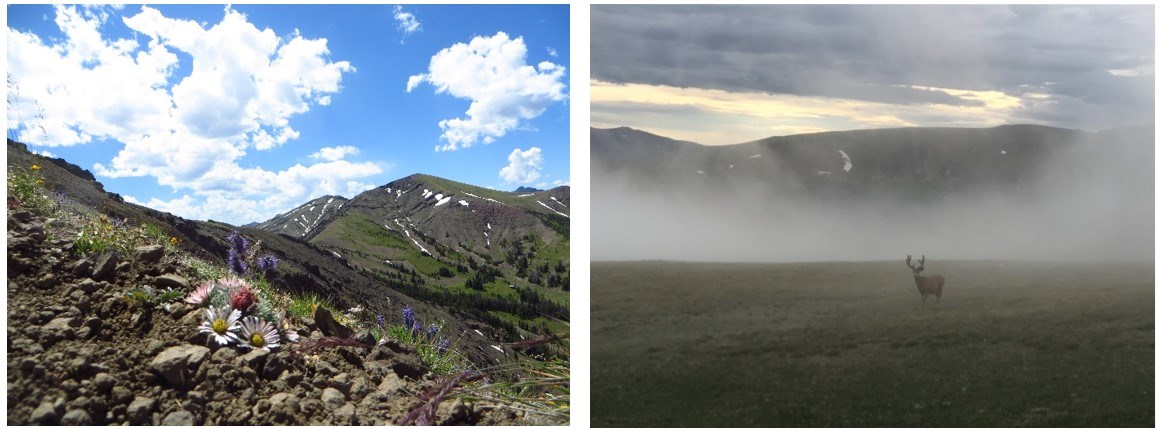
Photo credits: NPS/David Thoma (left); NPS/Erin Borgman (right)
What Information is Collected at each GLORIA Site?
Under GLORIA, scientists collect data on vegetation and soil temperatures on four different summits at each site following methods described on the GLORIA website and in this NPS article. Because changes in alpine environments occur relatively slowly, the sites are sampled once every five years. The current project included data collected from sites sampled two times (Yellowstone NP and Pecos Wilderness), three times (Rocky Mountain NP and Great Sand Dunes NP and Preserve), and four times (Glacier NP).

NPS/Kati Zybko (left); NPS (right)
What Have Scientists Found?
Scientists made several findings from their analysis of the 2003–2021 data. They found that:- there were changes in the plant community—changes in the types and abundances of plant species;
- shrubs and graminoids (grasses and grass-like plants) increased in abundance more than forbs; and
- changes in plant cover were affected by precipitation and growing degree days (the latter reflecting both warmer temperatures and more days of higher temperatures).
Changes in the Types and Abundances of Plant Species
Scientists looked for evidence of plant community-level change (that is, changes in the types and amounts of different plants). What they found was a striking pattern of turnover in species abundances over time in all five GLORIA sites. In particular, they found a clear tendency for species that had low cover values (referred to as “rare” in this article) or were absent from summit plots initially to increase in abundance over time. Meanwhile, species that were more abundant initially (referred to as “common”) disproportionately declined.What might explain these observations?
Why would species turn over? If conditions are shifting away from those that favor past and current plant community dominants, the common species would likely decline, and other species that were formerly absent or rare may increase in abundance.
In the GLORIA sites, rare or absent species that increased over time are likely to be lower-elevation species that were initially near their optimal climate conditions at lower elevations. At the same time, common species that decreased over time were likely to be near their optimal conditions initially, but they became increasingly mis-matched with local conditions as the climate warmed (Figure 2). Species at the summit cannot move any higher in elevation, because they are already at the highest point.
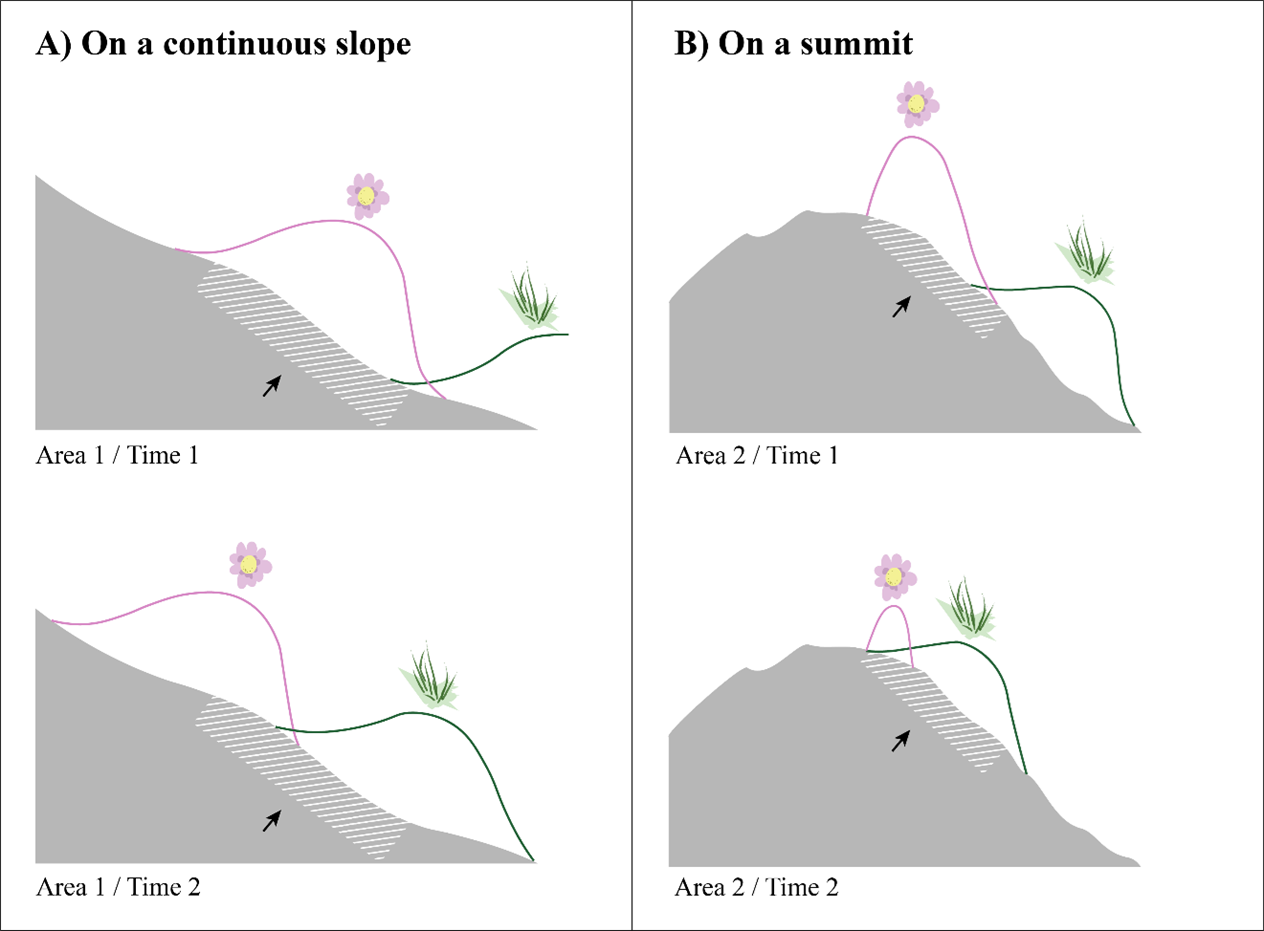
Figure by NPS, based on a sketch by Dan Doak, University of Colorado, Boulder.
Scientists also found that shrubs and graminoids (grasses and grass-like plants) increased in abundance more than forbs (herbaceous flowering plants). These results are in line with results from other studies and seem likely with warming and drying conditions, which should favor woody species and those with faster growth in warmer, more water-stressed environments.
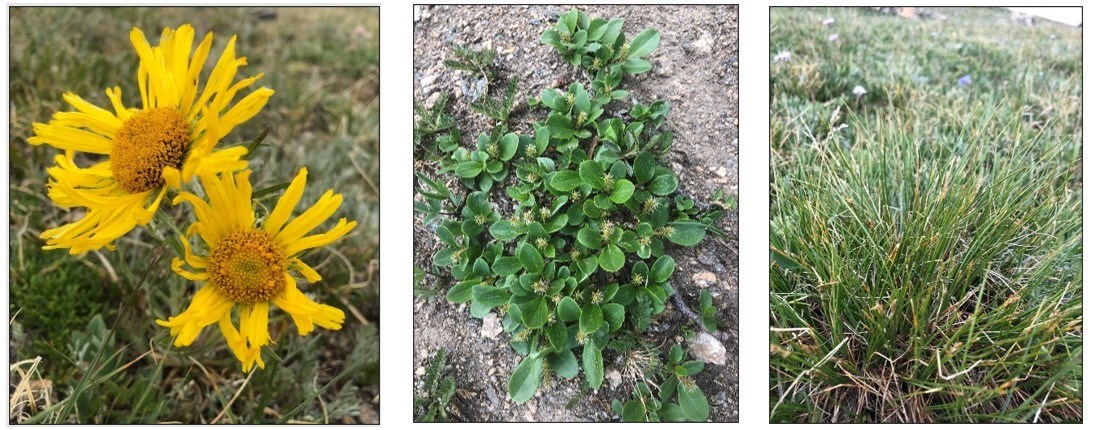
Left and right photo credits: NPS/Erin Borgman; center photo credit: NPS/Kati Zybko
Precipitation and Growing Degree Days Affected Plant Cover
Scientists found that several climate variables significantly influenced changes in plant cover. In particular, for more common species they found that plant abundance increased with:
- more precipitation throughout the year (measured from October 1–September 30),
- less precipitation during the growing season (June 1–September 25), and
- more growing degree days (reflecting a longer growing season). *
* In this study, growing degree days represents the number of days with air temperatures above 0° C (32° F). The measure is used to predict plant growth.
Why are the Study Findings Important?
Since establishment, the GLORIA monitoring sites in these four national parks and one national forest have been sampled two to five times (Glacier NP was sampled for a fifth time in 2024). With each new resurvey, the growing dataset sheds more light on how alpine plants are responding to changes in climate and other stressors. The project discussed here is just the first effort to reveal what these data have to tell us. We can use the information that we currently have to:
-
see that changes are occurring now in alpine vegetation, and these changes could affect other species that rely on alpine habitats (like the American pika [Ochotona princeps] or key insect pollinators);
-
assist park managers in making more informed stewardship and management decisions related to these environments. For example, during park alpine restoration projects, managers could prioritize planting species that are likely to succeed under future conditions and that can compete with faster-growing grasses.
Finally, this study interprets long-term monitoring data collected in parks to increase our understanding of changes in alpine environments in the U.S. Rocky Mountains and how we might conserve these special places for the future.
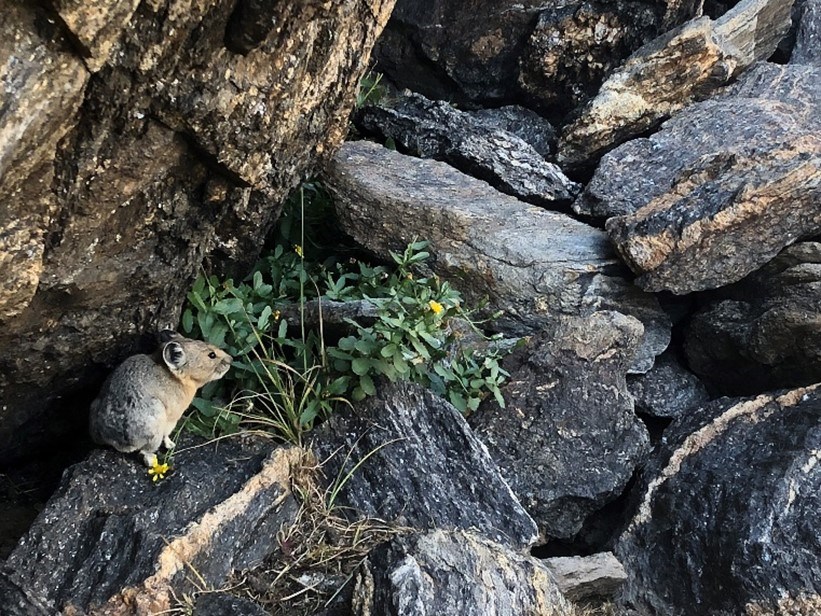
NPS Photo.
This article is based on the following report, funded by the NPS Natural Resource Condition Assessment Program:
Powers, C., E. Borgman, and D. F. Doak. 2024. Climate and species traits shape responses of alpine flora in the US Rocky Mountains to a changing world: Analysis of five GLORIA sites across the southern Rockies. Science Report NPS/SR—2024/221. National Park Service, Fort Collins, Colorado.
References
Lesica, P., and E. E. Crone. 2017. Arctic and boreal plant species decline at their southern range limits in the Rocky Mountains. Ecology Letters 20:166–174.
Pederson, G. T., L. J. Graumlich, D. B. Fagre, T. Kipfer, and C. C. Muhlfeld. 2010. A century of climate and ecosystem change in Western Montana: What do temperature trends portend? Climatic Change 98 (1–2):133–154.
Tags
- glacier national park
- great sand dunes national park & preserve
- rocky mountain national park
- yellowstone national park
- glacier national park
- yellowstone national park
- rocky mountain national park
- great sand dunes national park and preserve
- pecos wilderness
- santa fe national forest
- alpine
- alpine tundra
- alpine vegetation
- alpine monitoring
- plants
- vegetation
- natural resource condition assessment
- nrca
- nrca program
- science
- climate
- gloria
- rocky mountain network
- romn
- greater yellowstone network
- gryn
